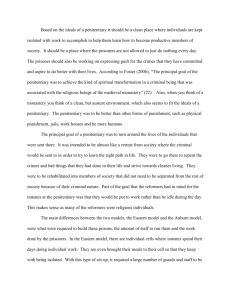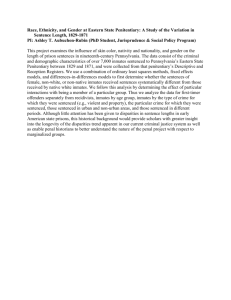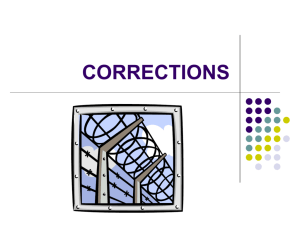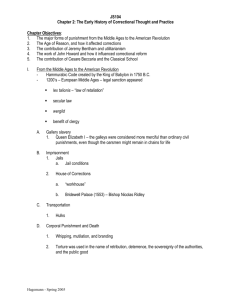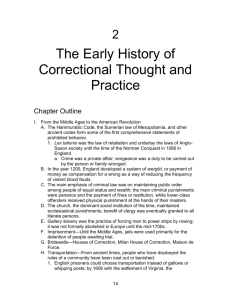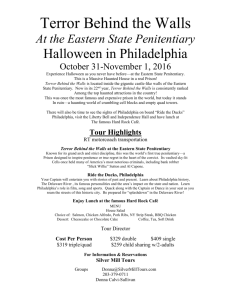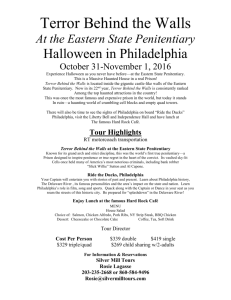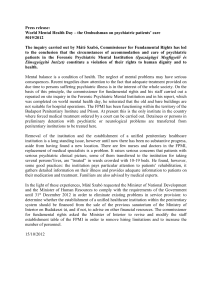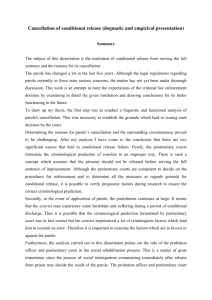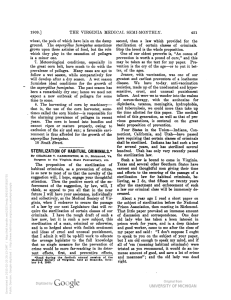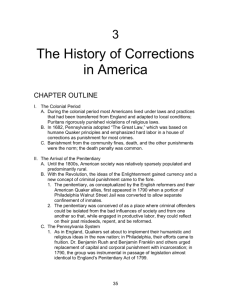Section 3
advertisement
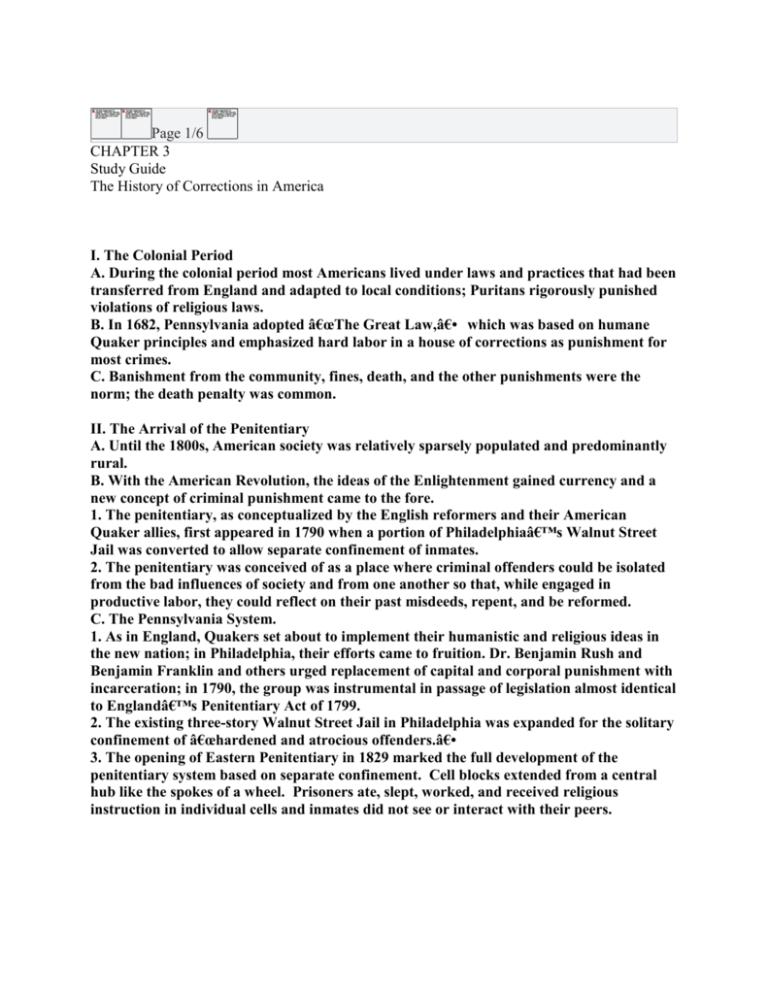
Page 1/6 CHAPTER 3 Study Guide The History of Corrections in America I. The Colonial Period A. During the colonial period most Americans lived under laws and practices that had been transferred from England and adapted to local conditions; Puritans rigorously punished violations of religious laws. B. In 1682, Pennsylvania adopted “The Great Law,― which was based on humane Quaker principles and emphasized hard labor in a house of corrections as punishment for most crimes. C. Banishment from the community, fines, death, and the other punishments were the norm; the death penalty was common. II. The Arrival of the Penitentiary A. Until the 1800s, American society was relatively sparsely populated and predominantly rural. B. With the American Revolution, the ideas of the Enlightenment gained currency and a new concept of criminal punishment came to the fore. 1. The penitentiary, as conceptualized by the English reformers and their American Quaker allies, first appeared in 1790 when a portion of Philadelphia’s Walnut Street Jail was converted to allow separate confinement of inmates. 2. The penitentiary was conceived of as a place where criminal offenders could be isolated from the bad influences of society and from one another so that, while engaged in productive labor, they could reflect on their past misdeeds, repent, and be reformed. C. The Pennsylvania System. 1. As in England, Quakers set about to implement their humanistic and religious ideas in the new nation; in Philadelphia, their efforts came to fruition. Dr. Benjamin Rush and Benjamin Franklin and others urged replacement of capital and corporal punishment with incarceration; in 1790, the group was instrumental in passage of legislation almost identical to England’s Penitentiary Act of 1799. 2. The existing three-story Walnut Street Jail in Philadelphia was expanded for the solitary confinement of “hardened and atrocious offenders.― 3. The opening of Eastern Penitentiary in 1829 marked the full development of the penitentiary system based on separate confinement. Cell blocks extended from a central hub like the spokes of a wheel. Prisoners ate, slept, worked, and received religious instruction in individual cells and inmates did not see or interact with their peers. Next Page Find Go to Page Thumbnail Index Image View Download a Copy Close
